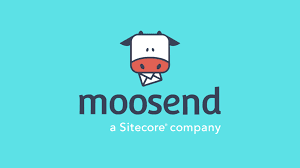Mastering Moosend: A Comprehensive Step-by-Step Tutorial on Email Marketing Automation
In the fast-paced world of digital marketing, harnessing the power of automation is key to streamlining your processes and achieving optimal efficiency. Moosend, a versatile email marketing platform, offers robust automation features that allow marketers to create personalized and targeted campaigns seamlessly. In this step-by-step tutorial, we'll guide you through the process of setting up effective email marketing automation with Moosend.
Step 1: Getting Started with Moosend
a. Account Creation:
Begin by signing up for a Moosend account. Navigate to the Moosend website, fill in the required information, and follow the prompts to create your account.
b. Dashboard Overview:
Once logged in, familiarize yourself with the Moosend dashboard. Explore the various sections, including campaigns, audience, and forms, to get an understanding of the platform's layout.
Step 2: Building Your Audience
a. Importing Contacts:
Navigate to the 'Audience' section and import your contacts. Moosend supports various file formats for easy migration of your existing subscriber list.
b. Segmentation:
Utilize Moosend's segmentation tools to organize your audience based on demographics, behaviors, or preferences. This segmentation will enable you to tailor your automated campaigns for maximum impact.
Step 3: Creating Engaging Email Campaigns
a. Email Campaign Creation:
Head to the 'Campaigns' section and click on 'Create a Campaign.' Choose the 'Automated' option to initiate an automated campaign.
b. Selecting Automation Workflow:
Moosend offers various automation workflows. Choose the one that aligns with your campaign goals, whether it's a welcome series, abandoned cart recovery, or a nurturing sequence.
Step 4: Setting Triggers and Actions
a. Defining Triggers:
Set triggers to initiate your automation workflow. Triggers can include subscriber sign-ups, specific dates, or user actions such as clicks or opens.
b. Adding Actions:
Define the actions you want the automation to take based on the triggers. Actions can include sending emails, updating subscriber information, or moving subscribers to different segments.
Step 5: Designing Emails within Automation
a. Drag-and-Drop Editor:
Create captivating emails using Moosend's drag-and-drop editor. Customize the layout, add dynamic content, and personalize each email for a tailored experience.
b. Conditional Splitting:
Explore conditional splitting to tailor the journey for different segments. Send specific emails based on subscriber behavior or characteristics.
Step 6: Testing and Launching Automation
a. Testing:
Before launching your automation, thoroughly test each step. Use Moosend's testing features to ensure that emails are triggered correctly, and content displays as intended.
b. Launching the Automation:
Once satisfied with your setup, launch the automation. Monitor the performance through the analytics dashboard, where you can track opens, clicks, and other key metrics.
Step 7: Analyzing and Iterating
a. Analytics Dashboard:
Regularly check the analytics dashboard to gain insights into the performance of your automated campaigns. Identify areas for improvement and iterate on your strategy accordingly.
b. Continuous Improvement:
Automation is an iterative process. Use the data gathered to refine your automation workflows, email content, and targeting for ongoing success.
Conclusion: Mastering Email Marketing Automation with Moosend
By following this comprehensive step-by-step tutorial, you've embarked on a journey to master email marketing automation with Moosend. Remember, automation is not a one-time setup; it requires continuous refinement and optimization. Embrace the flexibility and power of Moosend to create personalized, targeted, and highly effective automated campaigns that resonate with your audience. Happy automating! 🚀📧 #MoosendTutorial #EmailMarketingAutomation #DigitalMarketing"
.png)
.png)
.png)
.png)
Comments
Post a Comment